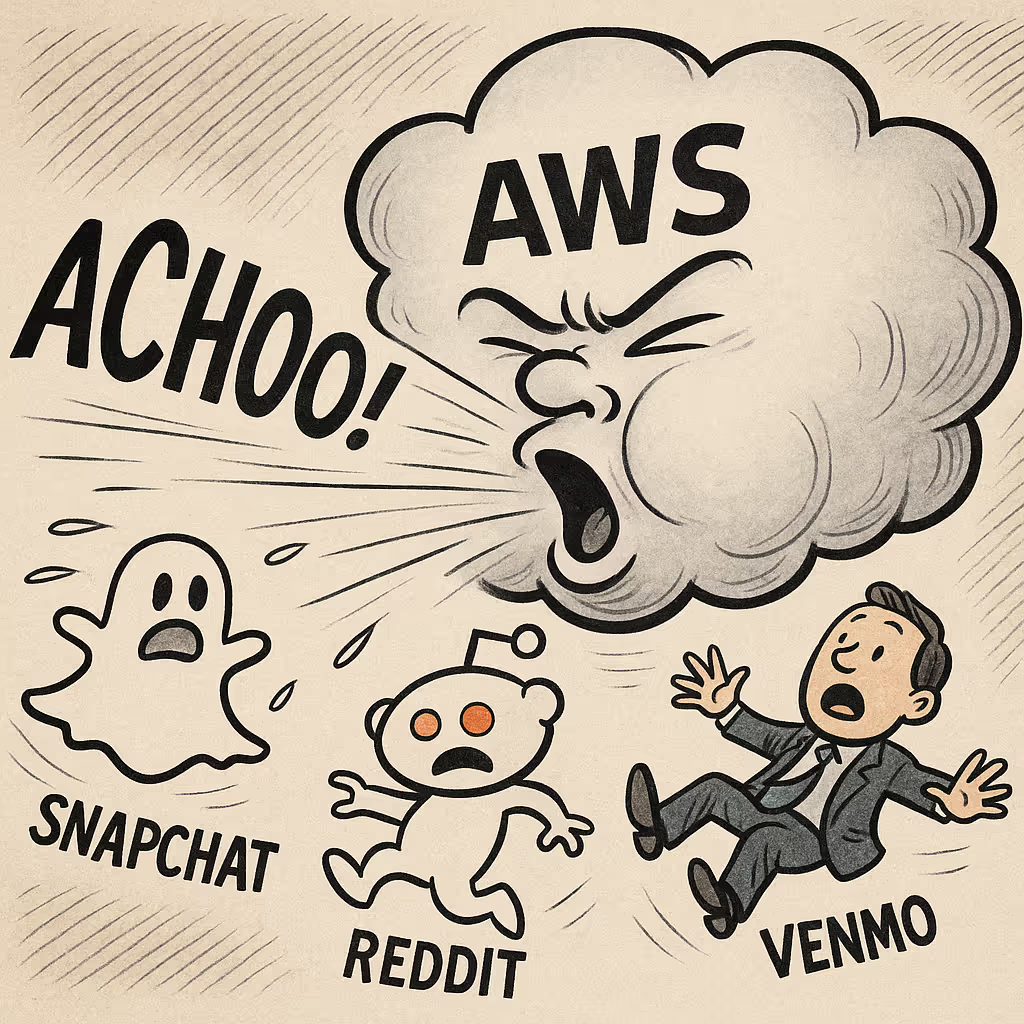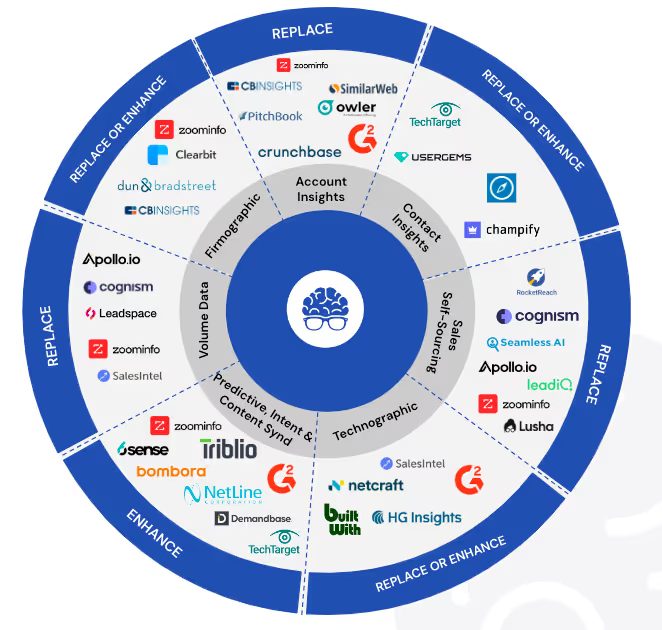The moment the internet hiccuped
In the early hours of Monday morning (U.S. East time), AWS flagged an “operational issue” in its US-EAST-1 region—Northern Virginia—a hub that powers huge swaths of global cloud infrastructure. Technical.ly+1
Because so many services rely on that region (including services you may never think of as “AWS-hosted”), the effect rippled outward: apps like Snapchat, Venmo, Duolingo, Signal and many more reported failures or degraded performance. Reuters+1
For a few hours, parts of the web simply weren’t behaving like we expect them to.
What this means for companies like ours
As someone leading demand-generation and pipeline at LeadGenius, here’s why this matters and how you (and your prospects) should interpret it:
- Tech-stack consolidation risk: More companies are leaning on fewer providers for infrastructure, data, outreach platforms, CRMs, analytics, etc. That means when one of the big players is hit, the knock-on effect extends far beyond the immediate vendor.
- Services that depend on “always-on” lose trust fast: Imagine you’re doing outreach, using account insights, sending opens, clicks, email sequences, alerts to SDRs—then your stack hiccups. That hurts revenue momentum and creates chaos in your revenue operations sequence.
- Custom data & signal flows are vulnerable: At LeadGenius we pride ourselves on delivering bespoke data—firmographics, technographics, hiring signals, supply-chain insights. But if your infrastructure depends on fewer cloud hubs, then your access to those insights can be compromised, delaying decision-making or worse, leading to blind spots.
- Operational agility becomes a competitive moat: If you’re built with single-region or single-provider dependencies, you’re more exposed. If you’ve done the work to diversify, fail-over, or build fallback processes, you take less of the hit.
A short diversion: what happens when “the cloud” stops being invisible
Here’s a forward-looking thought:
You may not have heard “LeadGenius was down” in today’s headlines (though internally we saw hiccups). But let’s assume our outbound systems, our signal ingestion from 40 million websites, or our delivery of alerts to an SDR team got delayed for 30 minutes. That 30 minutes could mean the difference between reaching into a prospect’s inbox when they’re engaged vs. after they’ve moved on. It could push a meeting from Monday to Wednesday.
As companies double down on speed and timing in GTM, even small windows of outage become meaningful.
Why This Matters Right Now
🚀 Velocity in GTM = Competitive Edge
In today’s go-to-market landscape, speed isn’t just a metric — it’s a moat.
For Marketing, Sales, and Revenue Ops leaders, velocity defines who wins the deal and who watches from the sidelines. A cloud provider outage, even a short one, doesn’t just slow websites — it slows revenue. Insights arrive later. Outreach sequences stall. Automated triggers misfire. And the once-perfectly timed follow-up lands after your competitor has already called.
Every second your data pipeline lags, your funnel softens. You lose the micro-moments — the fleeting windows when intent is highest and context is fresh. That’s where modern GTM organizations separate signal from noise.
⚡ Signal Fatigue + The Relevance Gap
The modern buyer is already drowning in noise. Thousands of emails, ads, and pitches fight for their attention daily. The only way to break through is relevance — knowing when and why to reach out, not just who to reach out to.
But when your insights — new hires, product launches, funding events — are delayed or disrupted because of a single cloud dependency, your team loses that edge.
Instead of insight-led outreach, you’re back to volume-led outreach.
Instead of “We saw your new product launch in Germany,” it becomes “Just checking in…”
That erosion of context is deadly. It’s how challenger sellers lose their ability to challenge — because they no longer have the data to lead the conversation.
🧱 Trust & Continuity Are Brand Attributes
When you tell a customer, “We deliver real-time bespoke data at scale,” you’re not just selling a product — you’re making a trust promise.
You’re saying:
- “We’re reliable when others aren’t.”
- “We know before your competitors do.”
- “We don’t break when the internet does.”
But that promise is only as strong as your weakest dependency.
When a major infrastructure partner like AWS stumbles, it’s a stark reminder that even “scalable” isn’t synonymous with “resilient.”
This is where differentiation happens. The organizations that will win the next decade aren’t just the ones with the biggest datasets — they’re the ones who can stay operational, insightful, and relevant in spite of the outages, latency, or noise that hit everyone else.
Resilience is the new reliability. Continuity is the new credibility.
💡 Thought Exercise for GTM Leaders
Imagine your outbound engine — CRM, MAP, data feeds, intent alerts — all running through a single cloud region.
Now imagine it blinks for just 30 minutes.
What gets delayed?
Who doesn’t get emailed?
Which deal stalls because an SDR didn’t get their signal alert?
Now multiply that by every downstream tool depending on the same cloud backbone — and you see how fragile even “modern” stacks have become.
This is why the smartest GTM teams are re-architecting their data strategy the same way finance teams diversify risk: multi-source, multi-path, fail-safe by design.
Because in a world where milliseconds of downtime translate into millions in delayed pipeline, resilience isn’t an IT goal — it’s a revenue goal.
The bigger trend and why we should care
It’s not just one outage. Here’s what the trend says:
- The U.S.-East region (US-EAST-1) has historically been a default for many providers and carries outsized weight. Technical.ly+1
- Outages in this region have happened repeatedly—2017, 2021, 2023 and now 2025. OnlineOrNot+1
- As more companies consolidate infrastructure (cloud, data, analytics, outreach tooling) around major vendors, the “single-point-fail” risk grows.
So here’s the key pivot: If your GTM playbook assumes “my tech works, always” you’re exposed. Instead, assume “my tech can fail—and build for when it does.” That’s how you stay credible with Revenue Leaders, who expect optimal data, perfect timing, zero downtime.




